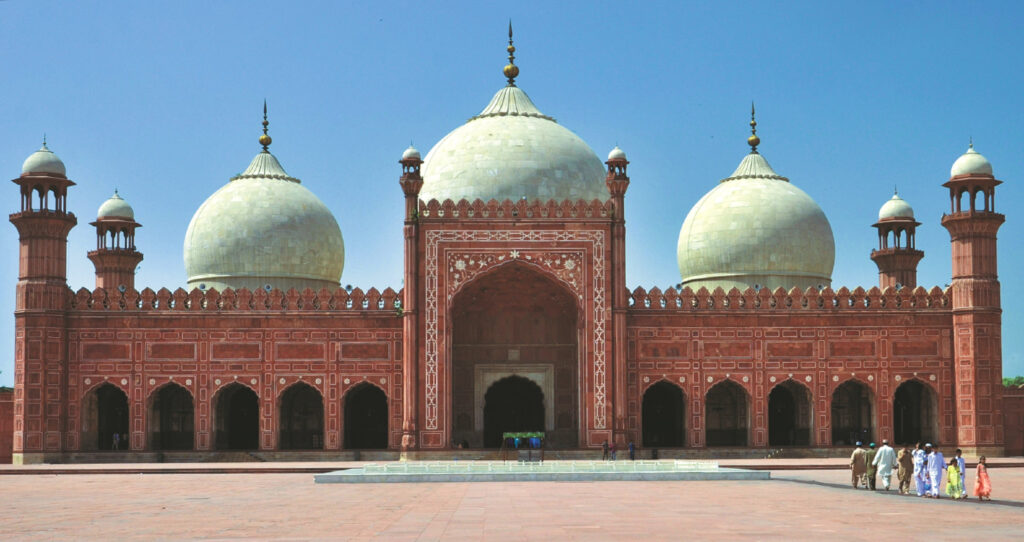Mughal Era Mosques: A Reflection of India’s Mughal Heritage
India is home to some of the most beautiful and majestic mosques in the world, many of which were built during the Mughal era. The Mughal dynasty spanned from the 16th century to the early 19th century, and many of the mosques built during this time still stand today, providing a reminder of India’s rich Mughal heritage.
In this article, we will take a look at some of the most iconic Mughal era mosques in India and explore the unique features that make them so special. We will also discuss the history of Mughal architecture and its influence on India’s art, culture, and religious life. So, if you are planning a trip to India and want to get a glimpse of its Mughal past, then read on!
What is Mughal Architecture?
The Mughal Empire was a Muslim dynasty that ruled much of the Indian subcontinent from the 16th to the early 19th century. During this time, a distinct style of architecture known as Mughal architecture flourished, and some of India’s most iconic structures were built during this period.
Mughal architecture is characterized by its use of arches, domes, and intricate detailing. Many of the mosques built during this period are decorated with Islamic calligraphy, geometric patterns, and floral motifs. The use of red sandstone and white marble is also a common feature of Mughal architecture.
Notable Mughal Era Mosques in India
India is home to some of the most spectacular mosques from the Mughal era, and here are some of the best ones you should visit if you want to get a glimpse of India’s Mughal past.
1. Jama Masjid, Delhi
The iconic Jama Masjid is one of the largest mosques in India, built by Mughal Emperor Shah Jahan in 1656. It is located in the heart of Old Delhi, and its majestic red sandstone walls and towering minarets make it a sight to behold.
The mosque has three gateways, four towers, and two 40-meter high minarets. Inside, visitors can enjoy the intricate marble and sandstone carvings, as well as the stunning marble domes.
2. Taj-ul-Masajid, Bhopal
The Taj-ul-Masajid is one of the largest mosques in India and is located in the city of Bhopal. It was built by Mughal Emperor Shah Jahan in the 19th century and is known for its stunning architecture.
The mosque is decorated with arches, domes, and intricate Islamic calligraphy. Its minarets are topped with gold-plated finials, and the main prayer hall is adorned with marble and sandstone carvings.
3. Fatehpur Sikri Mosque
The Fatehpur Sikri Mosque is located in the city of Agra and was built by Mughal Emperor Akbar in the 16th century. It is known for its unique architecture, which combines elements of Hindu, Islamic, and Jain styles.
The mosque is famous for its three-story entrance, which is decorated with intricate stone carvings. Inside, visitors can admire the stunning marble domes and arches, as well as the beautiful Islamic calligraphy.
4. Jama Masjid, Agra
The Jama Masjid in Agra is another impressive Mughal era mosque. It was built by Shah Jahan in the 17th century and is located near the iconic Taj Mahal. The mosque is made of red sandstone and white marble, and its large courtyard can accommodate thousands of worshippers.
The Jama Masjid in Agra features four tall minarets, three large domes, and a beautiful prayer hall adorned with intricate carvings and calligraphy. The central mihrab (prayer niche) is made of marble and is a masterpiece of Mughal craftsmanship.
5. Moti Masjid, Delhi
Built by Emperor Aurangzeb, the Moti Masjid, or Pearl Mosque, is located inside the Red Fort in Delhi. This small yet elegant mosque is made of white marble, giving it a pristine and pearl-like appearance.
The Moti Masjid is known for its three bulbous domes and a single prayer chamber. The courtyard features a shallow tank in the center for ablution. The mosque’s simple yet graceful design is a testament to the architectural finesse of the Mughal era.
6. Badshahi Mosque, Lahore
While not in India, the Badshahi Mosque in Lahore, Pakistan, is a remarkable example of Mughal architecture and deserves mention. Commissioned by Emperor Aurangzeb, it is one of the largest mosques in the world and a masterpiece of Mughal construction.
The Badshahi Mosque features red sandstone and white marble, with four towering minarets and three elegant domes. The interior is adorned with intricate frescoes and Persian calligraphy. The spacious courtyard can accommodate thousands of worshippers and offers stunning views of the nearby Lahore Fort.
These mosques showcase the grandeur and artistic achievements of Mughal architecture. Each structure reflects the cultural synthesis and architectural innovations that occurred during the Mughal era in India. Visiting these mosques provides a captivating journey into the country’s rich history and the enduring legacy of Mughal craftsmanship.

